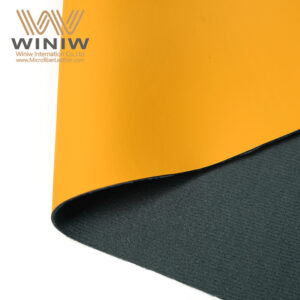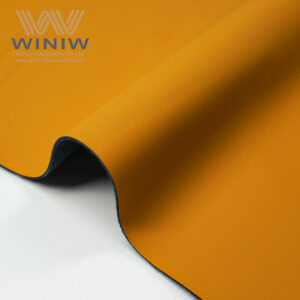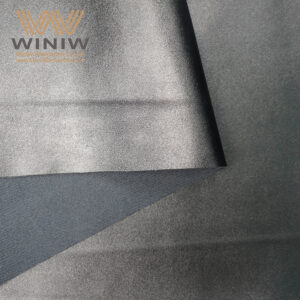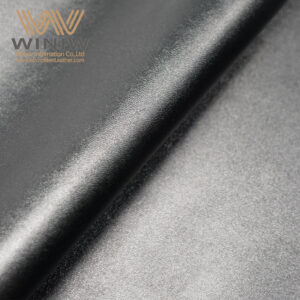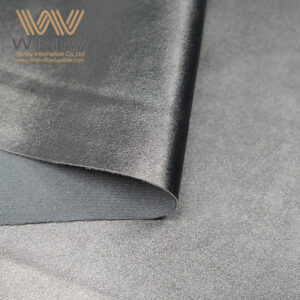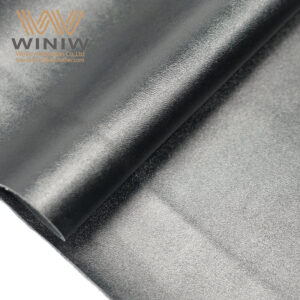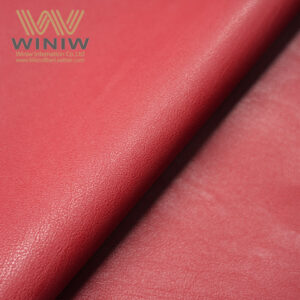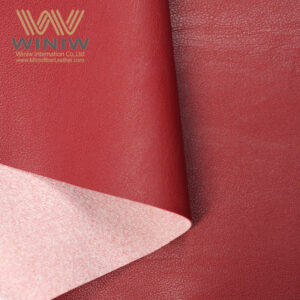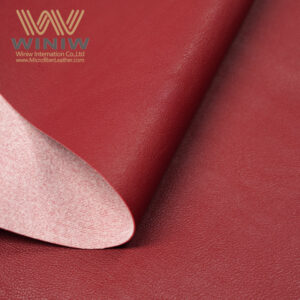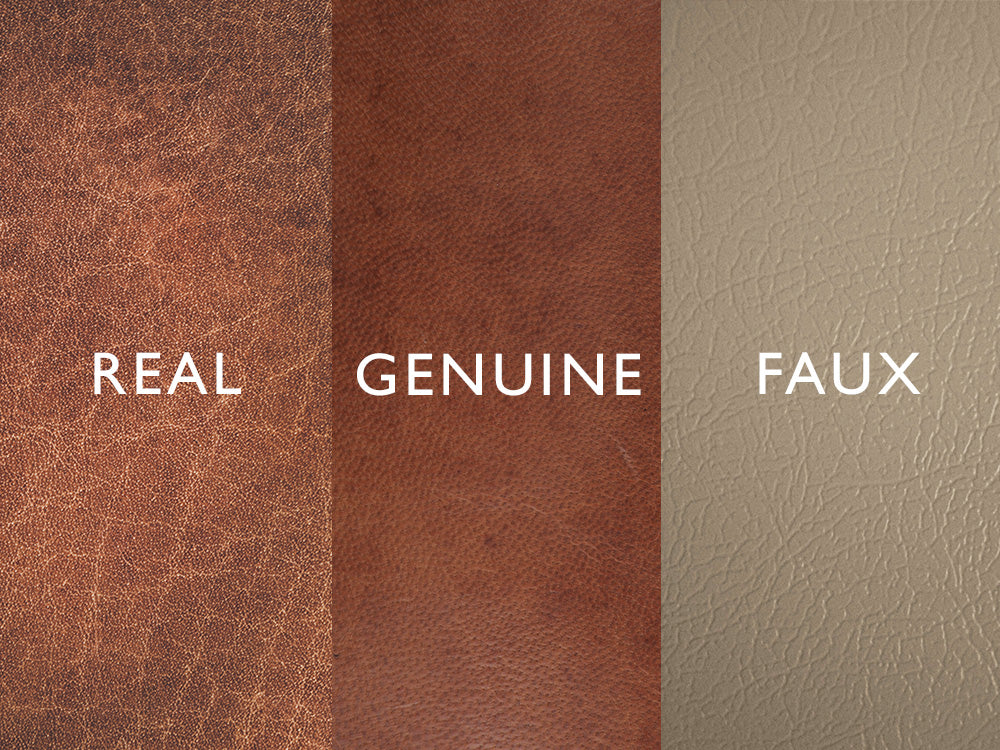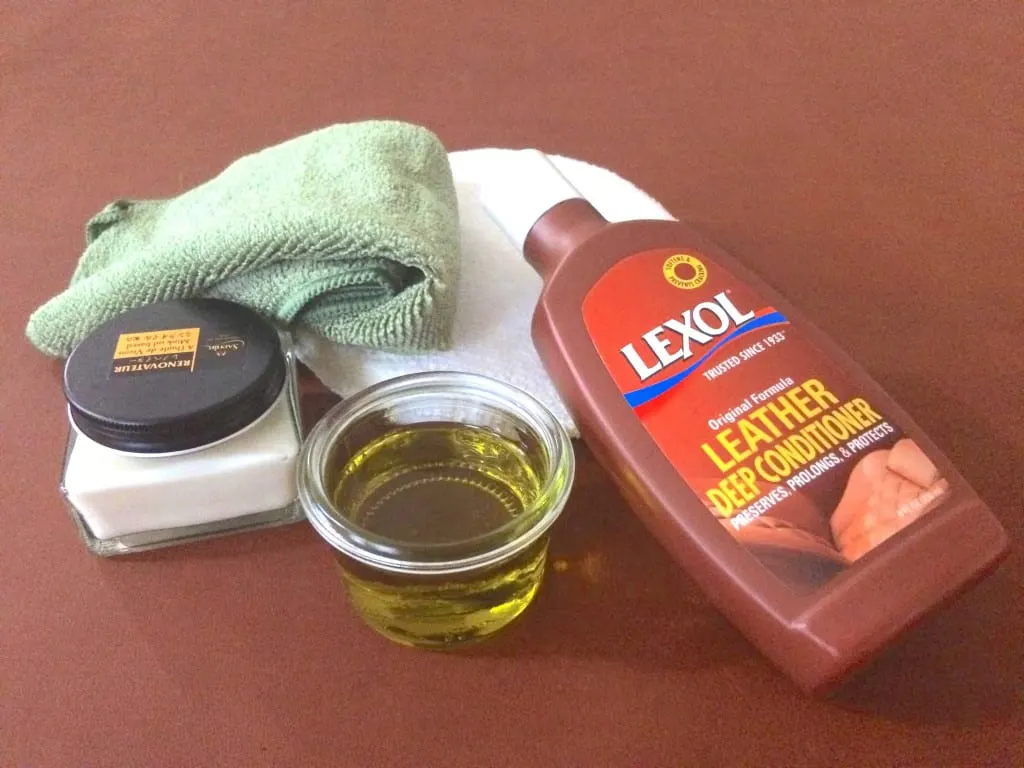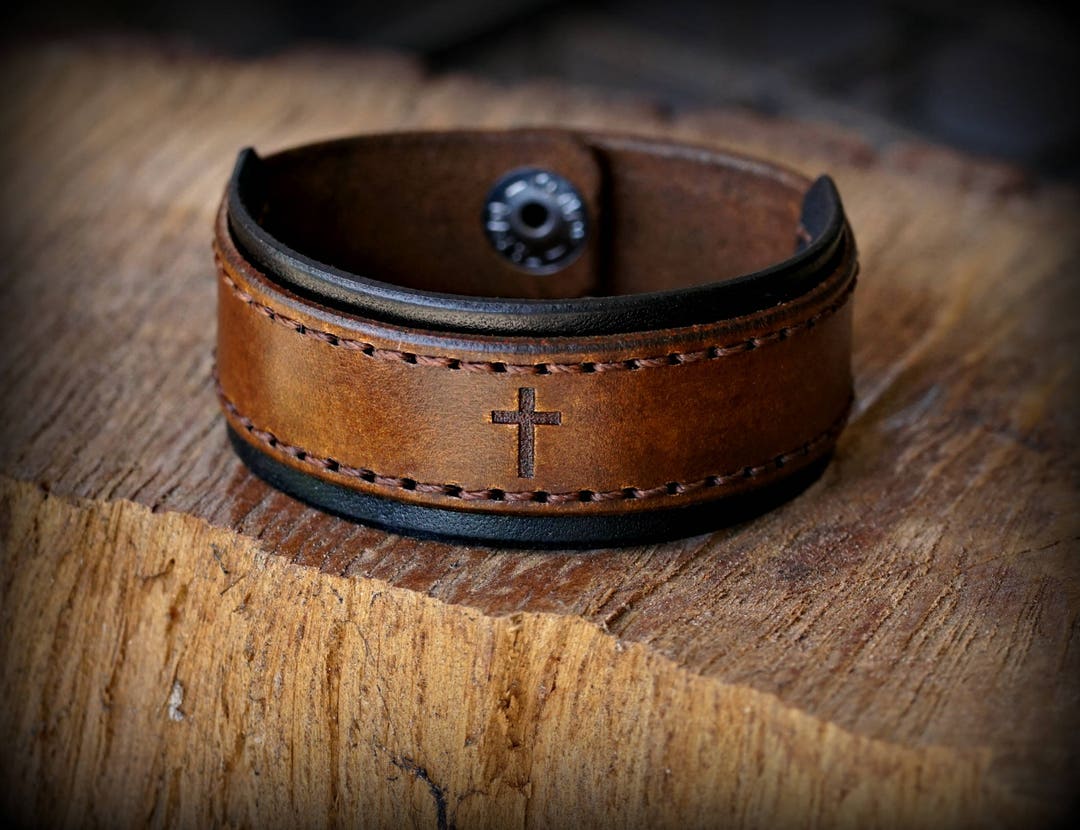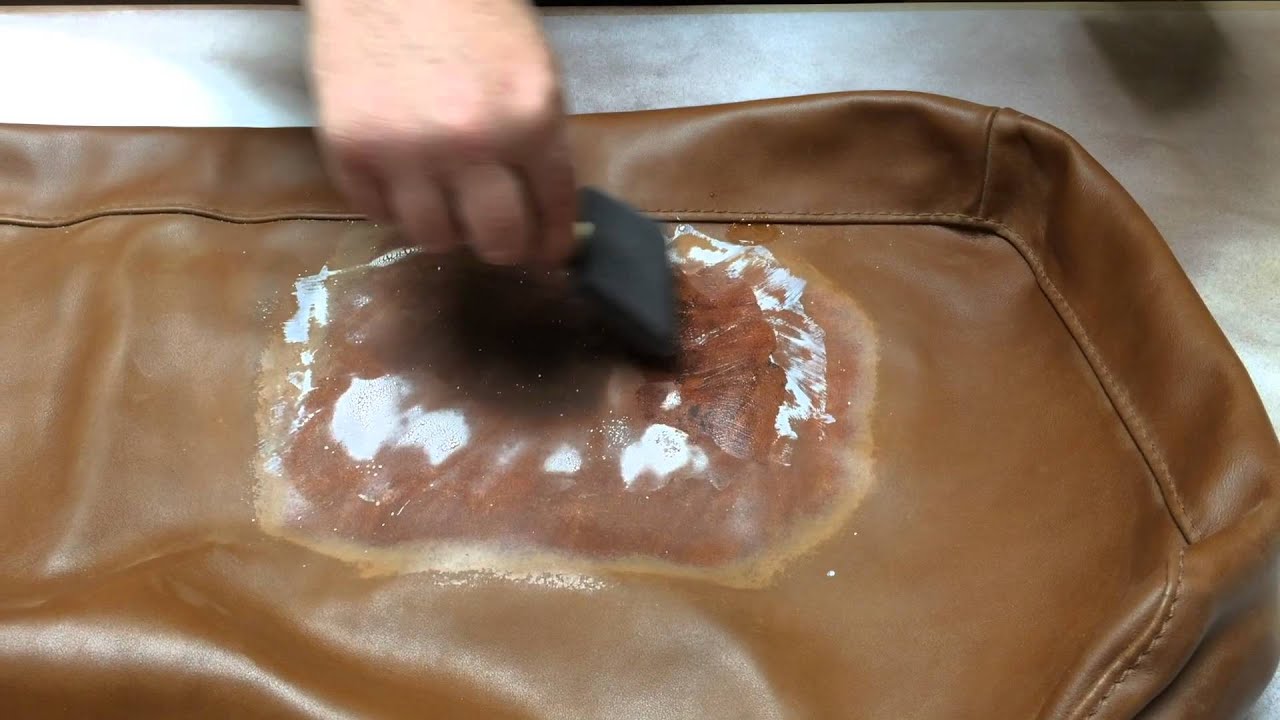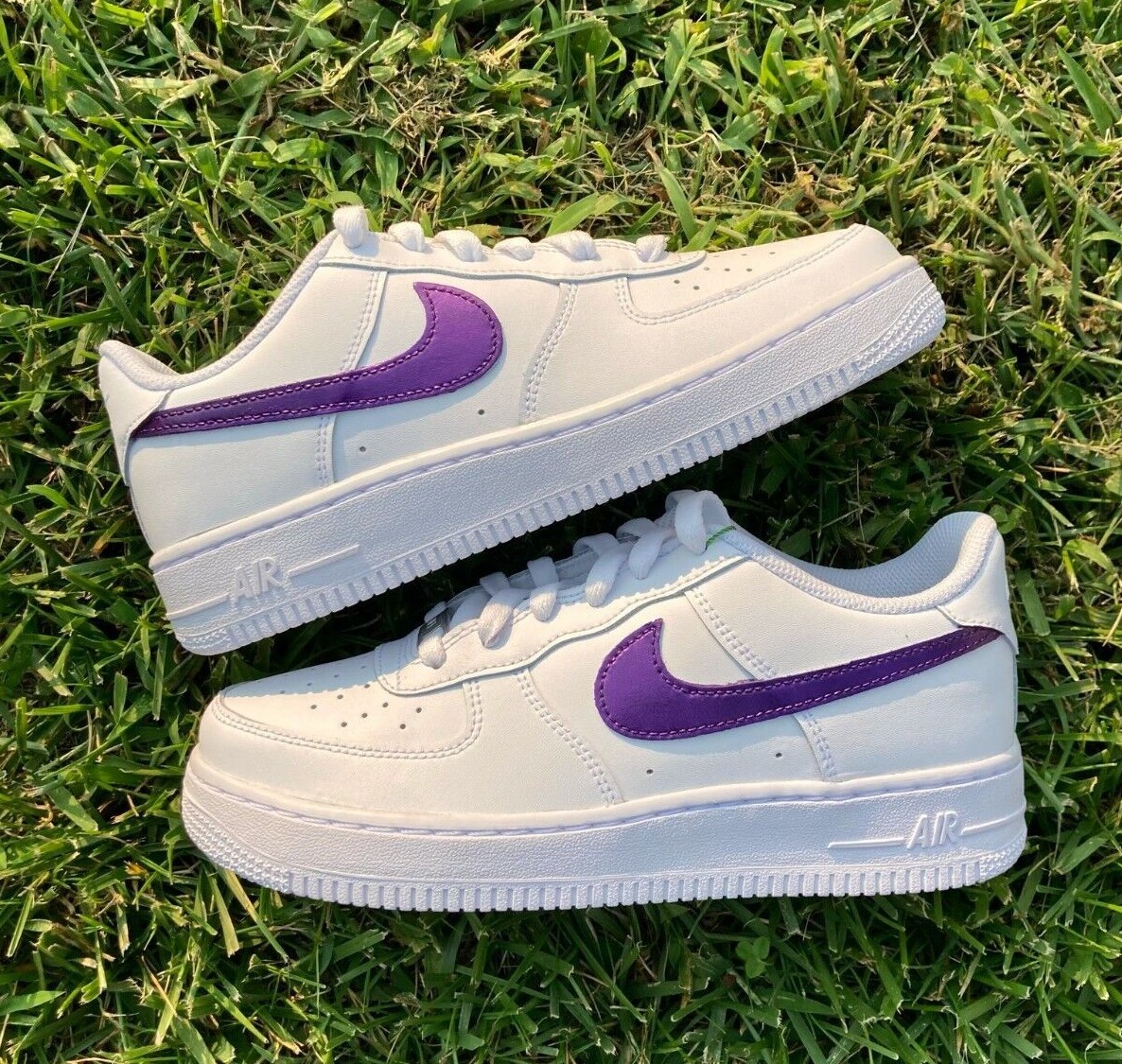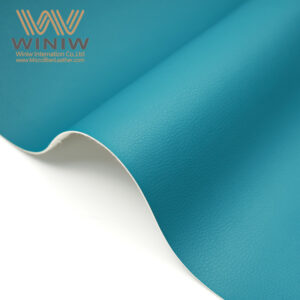
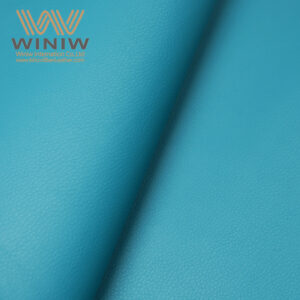
I often hear questions about which material truly supports a healthier environment. Recent research shows that the answer depends on how we define eco-friendly. I see that plant-based alternatives continue to gain momentum.
- The Global Plant-Based Leather Market reached USD 67.15 million in 2022.
- Projections show it will grow to USD 122.55 million by 2030, with a CAGR of 7.81% from 2024-2031.
When I evaluate Vegan Leather Meaning and animal leather, I consider both benefits and drawbacks. I encourage you to look at the full lifecycle and demand transparency from brands before making decisions.
Key Takeaways
- Vegan leather and animal leather both have environmental impacts. Research the materials and production methods to make informed choices.
- Plant-based vegan leather, made from materials like cactus or pineapple, is often more sustainable than plastic-based options. Look for these alternatives.
- Animal leather is durable and can last decades, but its production uses significant resources and emits high greenhouse gases. Consider longevity versus environmental cost.
- Check for third-party certifications to verify eco-friendly claims. Brands that prioritize transparency often provide better sustainability practices.
- Ask brands about their sourcing and production methods. This helps ensure you support companies committed to reducing their environmental impact.
Eco-Friendliness Overview


Main Findings
When I compare cuero vegano and animal leather, I see that neither option offers a perfect solution for the environment. Each material comes with its own set of environmental consequences. I notice that the climate impact of animal leather stands out due to high greenhouse gas emissions, significant land use, and water consumption. For example, producing a single cowhide tote can require over 17,000 liters of water and generate up to 110 kg of CO2 per square meter. This level of resource use places a heavy burden on the environment.
Vegan leather, especially plastic-based types like PU leather, presents a different set of challenges. While it avoids the direct emissions from livestock, it relies on petroleum-based products. This alternative produces about 15.8 kg of CO2 per square meter, which is lower than animal leather but still significant. I also see that plastic-based vegan leather does not biodegrade easily and can shed microplastics, adding to pollution concerns.
Plant-based vegan leather alternatives, such as those made from cactus or pineapple, offer a more sustainable path. These materials can match the quality of high-grade leather and often use fewer resources. However, their market presence remains limited, and they may not always provide the same flexibility as traditional leather.
Note: No single material emerges as the clear winner for eco-friendliness. The environmental impact depends on the type of leather, the raw materials used, and the production process.
Here is a comparison of the primary environmental impacts:
| Type of Leather | Benefits | Drawbacks |
|---|---|---|
| Plastic-based Vegan | Water resistance, cheaper to produce, requires less care | Derived from fossil fuels, not biodegradable, sheds microplastics, lower durability |
| Plant-based Vegan | Comparable to high-grade leather, can develop a patina, more sustainable | Higher cost, limited availability, slightly less flexible |
| Animal Leather | Generally more durable | High water and land use, high greenhouse gas emissions, harmful chemicals in tanning |
Key Factors
I always consider several key factors when evaluating the eco-friendliness of leather alternatives. The source of raw materials, the production process, and the end-of-life disposal all play major roles in determining the overall environmental impact.
- Greenhouse Gas Emissions: Animal leather production releases much higher emissions than vegan leather. Livestock farming contributes to deforestation and methane release, which worsens the climate impact.
- Land and Water Use: Animal leather requires vast amounts of land and water. Vegan leather, especially plant-based types, uses fewer resources, but plastic-based options still depend on fossil fuels.
- Pollution: Tanning animal hides involves toxic chemicals that can pollute water and soil. Plastic-based vegan leather alternatives contribute to microplastic pollution and do not break down easily.
- Durability and Longevity: Animal leather lasts longer, which can reduce the need for frequent replacement. Some plant-based vegan leather options now offer similar durability, but plastic-based types often wear out faster.
Here is a table summarizing the environmental drawbacks of each type:
| Type of Leather | Environmental Drawbacks |
|---|---|
| Cuero PU | Uses petroleum-based products, not biodegradable, contributes to microplastic pollution, limited recycling options. Produces about 15.8 kg of CO2 per square meter. |
| Animal Leather | High greenhouse gas emissions from livestock farming, significant water usage (over 17,000 liters for one cowhide tote), uses harmful chemicals in tanning, can produce up to 110 kg of CO2 per square meter. |
When I look at the full lifecycle, I realize that both vegan leather and animal leather have trade-offs. The most sustainable choice often depends on the specific material and how it is made. I recommend that anyone interested in reducing their environmental impact should research the source and production methods of their chosen leather alternatives.
Vegan Leather Meaning
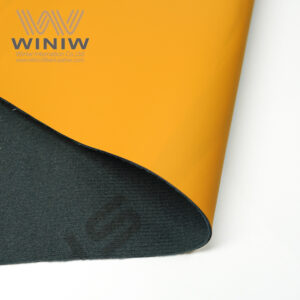

Materials Used
When I discuss vegan leather meaning, I focus on the materials that define this innovative alternative. I see that vegan leather includes a wide range of sources. Most commonly, manufacturers use plant-based leather derived from natural fibers. Pineapple leaves, cactus, apple peels, and mushrooms serve as popular choices for plant-based leather. These materials offer a renewable resource and help reduce reliance on animal products.
I also notice that recycled materials play a significant role in vegan leather meaning. Some brands create vegan leather from recycled water bottles. This process transforms plastic waste into usable fibers, supporting the concept of plastic-free leather. I find that plastic-free leather often uses organic matter, such as cork or coconut husks, to avoid synthetic polymers. The shift toward plant-based leather and plastic-free leather reflects a growing demand for sustainable options.
- Pineapple leaves
- Cactus fibers
- Apple peels
- Mushrooms
- Cork
- Coconut husks
- Recycled water bottles
These materials help define vegan leather meaning and support eco-friendly innovation.
Production
I observe that the production of vegan leather meaning varies depending on the source material. Plant-based leather production usually starts with harvesting natural fibers. Manufacturers process these fibers into sheets using mechanical or chemical methods. For example, pineapple leaves undergo extraction and blending before forming a flexible material. Cactus-based plant-based leather uses mature leaves, which are cleaned, mashed, and dried to create a durable surface.
Plastic-free leather production avoids petroleum-based inputs. I see that cork and coconut husks require minimal processing. Producers compress and treat these materials to enhance strength and texture. Recycled water bottles follow a different path. Factories melt the bottles, spin the plastic into fibers, and weave them into sheets. This method reduces landfill waste and supports vegan leather meaning.
I find that plant-based leather and plastic-free leather production often uses less energy and water than traditional animal leather. The absence of toxic tanning chemicals makes vegan leather meaning a safer choice for workers and the environment. I recommend looking for brands that disclose their production methods and prioritize transparency.
| Material Source | Production Method | Eco Benefit |
|---|---|---|
| Pineapple leaves | Extraction, blending, forming | Renewable, low-impact |
| Cactus fibers | Cleaning, mashing, drying | Minimal water use |
| Recycled water bottles | Melting, spinning, weaving | Reduces plastic waste |
| Cork | Compressing, treating | Biodegradable |
Tip: I always check for certifications that verify plant-based leather and plastic-free leather claims. This step helps ensure that vegan leather meaning aligns with my sustainability goals.
Plant-Based Leather
Types
I see plant-based leather as a growing segment in the vegan leather market. Manufacturers use a variety of raw materials to create these sustainable alternatives. Pineapple leaves, mushroom mycelium, and apple peels serve as the foundation for some of the most popular types. Each material offers unique properties and supports the shift toward a more sustainable alternative to animal leather.
Here is a table that summarizes the main types of plant-based leather and their raw materials:
| Type of Plant-Based Leather | Raw Materials Used |
|---|---|
| Pineapple Leather | Pineapple leaves |
| Mushroom Leather | Mushroom mycelium |
| Apple Leather | Apple peels |
I notice that pineapple leather, often called Piñatex, provides a flexible and lightweight option. Mushroom leather, made from mycelium, delivers a soft texture and can mimic the look of traditional leather. Apple leather uses discarded apple peels from the juice industry, transforming waste into a valuable resource. These plant-based options continue to expand, offering more choices for those seeking vegan leather.
Sustainability
When I evaluate the sustainability of plant-based leather, I focus on resource use, production impact, and end-of-life options. Plant-based leather uses agricultural byproducts, which reduces waste and supports a circular economy. I find that these materials require less water and energy compared to animal leather. The absence of toxic chemicals in production makes plant-based leather a safer choice for workers and the environment.
Many brands now promote plant-based leather as a sustainable alternative. I recommend looking for products that use renewable resources and transparent supply chains. Plant-based leather often biodegrades more easily than plastic-based vegan leather, which helps reduce landfill waste. I see plant-based leather as a sustainable alternative for consumers who want eco-friendly products without sacrificing style or durability.
Tip: I always check for third-party certifications when choosing plant-based leather. Certifications help verify claims and ensure that the product meets high environmental standards.
Plant-based leather stands out as a sustainable alternative in the vegan leather market. I believe that continued innovation will make these sustainable alternatives even more accessible and appealing.
Animal Leather
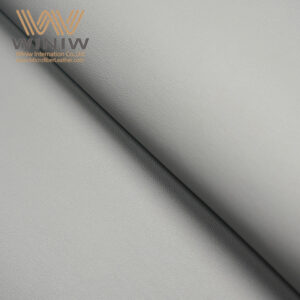
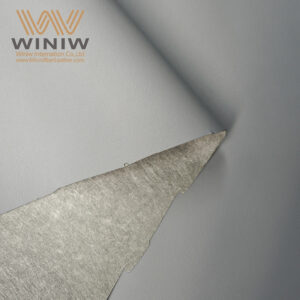
Source
When I examine animal leather, I always start by looking at its origins. Manufacturers source animal leather from a variety of animals. The most common sources include:
- Cattle
- Sheep
- Goats
- Equine animals
- Buffalo
- Pigs
- Aquatic animals
I see that cattle provide the majority of animal leather used in the fashion and furniture industries. Sheep and goats also contribute significantly, especially in regions where these animals are more common. Some specialty products use leather from equine animals, buffalo, or even aquatic animals like fish. The global leather market continues to grow, with the animal leather rug segment showing strong expansion. This growth reflects ongoing demand for animal leather in both traditional and luxury markets.
I notice that animal leather production often relies on byproducts from the meat industry. This approach helps reduce waste, but it does not eliminate the environmental impact. The scale of animal leather production remains vast, which means its environmental footprint is significant.
Tanning
Tanning transforms raw animal hides into durable animal leather. I find that this process preserves the material and gives it the flexibility and strength that consumers expect. There are two main tanning methods: chrome tanning and vegetable tanning.
Chrome tanning uses chromium salts to treat the hides. This method works quickly and produces soft, flexible animal leather. However, it introduces toxic chemicals into the environment if not managed properly. I have seen reports of water pollution and health risks for workers in regions where chrome tanning dominates.
Vegetable tanning relies on natural tannins from plants. This traditional method takes longer but avoids many harmful chemicals. The resulting animal leather has a firmer texture and develops a unique patina over time. Some brands now promote vegetable-tanned animal leather as a more eco-friendly option.
Tip: I always recommend checking how a brand tans its animal leather. The tanning process can make a big difference in the product’s environmental impact.
Raw Materials
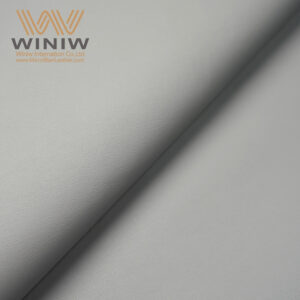
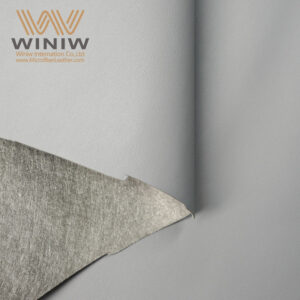
Resource Use
When I evaluate leather alternatives, I always start by examining the raw materials. Animal leather relies on animal hides, which come from livestock raised for meat and dairy. This process uses large amounts of feed, energy, and chemicals. I see that animal leather production often depends on resources like grain, water, and land. The tanning process also requires chemicals such as chromium salts, which can harm the environment if not managed properly.
Vegan leather uses a different set of resources. Plastic-based vegan leather, such as polyurethane (PU), depends on petroleum. This resource is non-renewable and contributes to pollution during extraction and processing. Plant-based vegan leather uses agricultural byproducts, such as pineapple leaves or apple peels. These materials come from crops already grown for food, which helps reduce waste. I notice that plant-based options often require less energy and fewer chemicals than animal leather.
Here is a table comparing resource use for each type:
| Leather Type | Main Raw Materials | Resource Intensity |
|---|---|---|
| Animal Leather | Animal hides, chemicals | Alta |
| Plastic-Based Vegan | Petroleum, additives | Moderate to High |
| Plant-Based Vegan | Crop byproducts, fibers | Low to Moderate |
Tip: I always check if brands use recycled or upcycled materials. This choice can lower the resource footprint and support a circular economy.
Land & Water
Land and water use play a major role in the environmental impact of leather. Animal leather requires vast areas for grazing and feed production. I see that cattle farming uses large tracts of land, which can lead to deforestation and loss of biodiversity. Water consumption is also significant. Producing one animal leather bag can use over 17,000 liters of water, mostly for raising livestock and processing hides.
Plastic-based vegan leather does not need farmland, but it relies on water and energy during manufacturing. The extraction of petroleum and production of synthetic polymers use water, though less than animal leather. Plant-based vegan leather stands out for its efficient land and water use. Manufacturers source materials from agricultural waste, which means no extra land is needed. Water use is lower, especially for cactus and mushroom leather.
I recommend looking for products that disclose their land and water footprint. Brands that use renewable resources and efficient production methods help reduce environmental impact.
- Animal leather: High land and water use, risk of deforestation.
- Plastic-based vegan leather: Moderate water use, no farmland needed.
- Plant-based vegan leather: Minimal land and water use, uses crop waste.
Note: I always ask brands about their sourcing practices. Transparency helps me choose products that align with my sustainability goals.
Production Impact
Chemicals
When I look at the production of both vegan and animal leather, I see that chemicals play a major role. Animal leather production often uses chromium salts and other heavy metals during the tanning process. These chemicals help preserve the hides and make the leather flexible. However, I have read that improper handling can lead to toxic waste. Workers in some regions face health risks because of exposure to these substances. I always recommend checking if a brand uses vegetable tanning, which relies on plant-based tannins and avoids many harmful chemicals.
Vegan leather production also involves chemicals, but the type and amount depend on the material. Plastic-based vegan leather, such as polyurethane (PU), uses solvents and plasticizers. These substances can release volatile organic compounds (VOCs) during manufacturing. Plant-based vegan leather usually requires fewer chemicals. For example, cactus or mushroom leather often uses water-based processes. I find that brands with transparent supply chains tend to use safer and more eco-friendly chemicals.
Tip: I always look for certifications like OEKO-TEX or Bluesign. These labels show that a product meets strict chemical safety standards.
Pollution
I see that pollution remains a significant concern in the leather industry. Animal leather tanneries can discharge untreated wastewater into rivers and soil. This waste contains toxic chemicals, dyes, and organic matter. I have seen reports of contaminated water sources near tanning facilities. Plastic-based vegan leather production can also cause air and water pollution. Factories may release microplastics and VOCs into the environment. Plant-based vegan leather usually creates less pollution, especially when brands use closed-loop systems to recycle water and minimize waste.
Here is a table comparing the main pollution risks:
| Leather Type | Main Pollution Risks |
|---|---|
| Animal Leather | Toxic wastewater, heavy metals |
| Plastic-Based Vegan | Microplastics, VOC emissions |
| Plant-Based Vegan | Minimal, mostly organic waste |
Note: I always ask brands about their waste management practices. Responsible companies invest in cleaner production and proper waste treatment.
Emissions
Greenhouse Gases
When I compare the emissions from cuero vegano and animal leather, I focus on greenhouse gases. Animal leather production creates a significant carbon output. Raising livestock releases methane, which has a strong effect on the climate. I have seen data showing that the leather carbon footprint for animal leather can reach up to 110 kg of carbon dioxide per square meter. This high number comes from the entire process, including animal feed, land use, and energy for processing.
Vegan leather, especially plastic-based types, produces less carbon during manufacturing. For example, polyurethane (PU) leather generates about 15.8 kg of carbon dioxide per square meter. Plant-based vegan leather options, such as those made from cactus or pineapple, often have an even lower carbon footprint. These materials use agricultural waste and require less energy. I always consider the climate impact of each material before making a recommendation.
Note: The carbon emissions from animal leather remain much higher than those from most vegan alternatives.
Air & Water
I also look at how leather production affects air and water quality. Animal leather tanneries often release pollutants into the air, including volatile organic compounds and dust. These emissions add to the overall carbon load in the atmosphere. Water pollution is another concern. Tanning animal hides uses chemicals that can leak into rivers and groundwater. This process increases the environmental burden.
Vegan leather production, especially for plastic-based types, can also affect air quality. Factories may emit carbon and other pollutants during the creation of synthetic materials. However, plant-based vegan leather usually has a smaller effect on both air and water. These products use fewer chemicals and often rely on closed-loop systems to recycle water.
Here is a table comparing the main emission sources:
| Leather Type | Main Air Emissions | Main Water Emissions |
|---|---|---|
| Animal Leather | Methane, carbon, VOCs | Chemical runoff, carbon |
| Plastic-Based Vegan | Carbon, VOCs | Microplastics, carbon |
| Plant-Based Vegan | Minimal carbon | Minimal |
I always recommend checking a brand’s environmental reports to see how they manage carbon emissions and pollution.
Durabilidad
Cuero vegano
I have tested many types of vegan leather over the years. I notice that high-quality vegan leather resists scratches and moisture very well. This resistance helps the material maintain its appearance, even with frequent use. I find that vegan leather often provides good longevity, especially when brands use advanced manufacturing techniques. Some products last for several years without showing major signs of wear. The water-resistant nature of vegan leather makes it suitable for everyday items like bags and shoes. I see that vegan leather does not develop a patina like animal leather, but it stays consistent in color and texture. When I compare the lifespan and wear resistance, I observe that vegan leather can be tough and reliable, although it may not match the decades-long durability of traditional animal leather. The durability of vegan leather also supports a lower leather carbon footprint, since products do not need frequent replacement.
Tip: I always recommend checking the care instructions for vegan leather. Proper cleaning helps extend its lifespan and keeps the material looking new.
Animal Leather
I have owned several animal leather products, and I know that their durability stands out. Many users report that real leather belts last 10 to 15 years or longer. Some animal leather goods even become family heirlooms, passed down through generations. I see that animal leather develops a unique patina over time, which adds character and value. With proper care, traditional leather products can last for decades. This long lifespan reduces the need for frequent purchases, which can help offset the high leather carbon footprint associated with production. However, I recognize that animal leather requires significant resources, including water and land, which increases carbon emissions.
- Traditional leather products can last for decades with proper care.
- Many users report that real leather belts last 10 to 15 years or longer, with some becoming family heirlooms.
- The production of leather is resource-intensive, requiring significant amounts of water and land, contributing to deforestation and greenhouse gas emissions.
I always weigh the durability of animal leather against its environmental impact. The long lifespan offers benefits, but the carbon cost remains high.
Disposal
Biodegradability
I always consider how a material breaks down at the end of its life. Animal leather, when tanned with vegetable-based methods, can biodegrade over time. Chrome-tanned leather resists decomposition because of the chemicals used. I have seen animal leather items last for decades in landfills. Plant-based vegan leather, especially those made from pineapple or mushroom fibers, often biodegrades much faster. These materials return to the soil without leaving harmful residues. Plastic-based vegan leather, such as polyurethane, does not break down easily. It can persist for years and release microplastics into the environment. I recommend checking product labels for information about biodegradability. Brands that use natural fibers and avoid synthetic coatings usually offer better environmental outcomes.
Tip: I always ask brands if their products are compostable or certified biodegradable. This helps me make informed choices.
Recycling
I see recycling as a critical part of reducing waste in the leather industry. Animal leather presents challenges because of the tanning process. Most recycling facilities cannot process tanned hides, so old leather goods often end up in landfills. Some companies now collect used leather and repurpose it into new products, such as insulation or composite materials. Vegan leather offers more options for recycling, especially when made from single-source plant fibers. I have found that plastic-based vegan leather can sometimes be recycled with other plastics, but contamination and mixed materials often limit this possibility. Plant-based vegan leather, when free from synthetic additives, can enter organic waste streams or be upcycled into new goods.
Here is a table comparing disposal options:
| Material Type | Biodegradability | Recycling Potential |
|---|---|---|
| Animal Leather | Low to moderate | Limited |
| Plant-Based Vegan | Alta | Moderate to high |
| Plastic-Based Vegan | Very low | Limited |
Note: I always look for brands that offer take-back programs or use recycled content. These efforts support a circular economy and reduce landfill waste.
Myths
Cuero vegano
I often hear several myths about cuero vegano, especially regarding its eco-friendliness and performance. Over the years, I have seen these misconceptions influence buying decisions. Here are the most common myths I encounter:
- Many people believe vegan wood leather is always more expensive than traditional leather. I have noticed that while initial prices can be higher, ongoing improvements in technology and production have made vegan wood leather increasingly competitive.
- Some buyers assume all vegan wood leather products are environmentally friendly. I always advise checking the source and manufacturing process. The environmental impact varies widely, so I look for data-backed certifications before making a purchase.
- There is a belief that vegan wood leather cannot match the durability of genuine leather. I have tested new materials and found that advances in material science now allow vegan wood leather to offer comparable or even superior durability for many uses.
Tip: I always recommend verifying sustainability claims and durability ratings with independent certifications. This step helps me make informed choices and avoid greenwashing.
Animal Leather
I often encounter misconceptions about animal leather and its environmental impact. I rely on factual data and industry standards to guide my decisions. The following table summarizes the most common myths and the realities I have observed:
| Myth | Fact |
|---|---|
| All leather is environmentally harmful. | Sustainable tanning and processing methods can reduce environmental impact. Many vendors now prioritize eco-friendly practices. |
| Price is the sole indicator of quality. | Quality depends on raw material sourcing, manufacturing standards, and certifications. |
| Regulations are uniform worldwide. | Regulatory standards differ by region, requiring tailored compliance strategies. |
| Innovation is optional. | Innovation in materials and processes leads to cost savings and product differentiation. |
| Supply chains are static. | Supply chains change due to geopolitical and economic shifts, so ongoing risk assessment is necessary. |
| Long-term forecasts are unreliable. | Robust data analysis allows forecasts to guide strategic planning. |
| All vendors are equally compliant. | Vendor due diligence is critical to ensure compliance with evolving standards. |
I always look beyond price and marketing claims when evaluating animal leather. I check for sustainable practices, certifications, and transparency in sourcing. These steps help me choose products that align with my environmental values.
Eco Claims
Certifications
When I evaluate eco-friendly products, I always look for recognized certifications. These certifications help me confirm that brands follow strict environmental and ethical standards. I find that both animal leather and vegan leather can carry different certifications, each with its own requirements. Here is a table that summarizes the most common certification bodies and what they demand:
| Certification Body | Type of Leather | Standards Required |
|---|---|---|
| Sustainable Leather Foundation | Animal Leather | Compliance with environmental standards and animal care regulations |
| Leather Working Group | Animal Leather | Environmental compliance and sustainability practices |
| GRS (Global Recycled Standard) | Cuero vegano | Verification of recycled content and compliance with environmental standards |
| ISO Standards | Both | Compliance with international quality and environmental management standards |
I always check for labels that mention “Eco-Friendly” or “Vegan.” These labels show that the product uses sustainable materials or avoids animal products. I trust products more when I see third-party certifications like GRS or ISO. These marks assure me that the brand meets high standards for environmental care.
Transparency
Transparency matters just as much as certification. I want to know where the materials come from and how the product was made. I often ask brands for detailed information about their sourcing and manufacturing. I look for brands that share data about their supply chain and production methods. This openness helps me compare products and choose the most sustainable option.
When I shop, I use this checklist:
- Look for third-party certifications on the label.
- Ask brands for sourcing and manufacturing details.
- Compare products using independent tests and customer reviews.
Tip: I always read product labels carefully and ask questions if something is unclear. Brands that value transparency usually provide clear answers and detailed information.
By focusing on certifications and transparency, I make better choices and support brands that truly care about sustainable practices.
Practical Advice
Choosing Wisely
I always recommend that readers approach material selection with a clear set of criteria. When I compare vegan leather and animal leather, I focus on more than just the environmental claims. I look at how each option performs over time and how suppliers manage their resources. I use the following table to guide my decisions:
| Criteria | Descripción |
|---|---|
| Scalability | Can the supplier meet your volume requirements sustainably over time? |
| Compliance | Do they adhere to environmental and social regulations relevant to your region? |
| Innovation | Are they investing in eco-friendly tanning or bio-based alternatives? |
| Long-term ROI | Does the material offer durability, aesthetic appeal, and cost efficiency over the product’s lifespan? |
I find that scalability matters when I want to support brands with growing demand. Compliance ensures that suppliers follow local and international standards. Innovation signals a commitment to reducing environmental impact. Long-term ROI helps me assess whether the material will last and maintain its value.
Tip: I always check if the product uses renewable resources and if the brand invests in new eco-friendly technologies.
Questions for Brands
I believe that asking the right questions helps me make informed choices. When I shop for leather goods, I ask brands about their sourcing and production methods. I use these questions to evaluate their transparency:
- Where do you source your raw materials?
- What tanning or finishing processes do you use?
- Do you hold any third-party certifications for sustainability?
- How do you manage waste and emissions during production?
- Can you provide details about the product’s end-of-life options?
I notice that brands willing to answer these questions usually value transparency and sustainability. I encourage readers to look for clear labeling and supply chain information. I trust brands that share data and support responsible practices.
Note: I always read product descriptions carefully and reach out to customer service if I need more details.
When I compare vegan leather and animal leather, I focus on their impact on carbon emissions, durability, and biodegradability.
- Vegan leather reduces the carbon footprint from animal farming but may use plastics that do not break down easily.
- Animal leather has a higher carbon cost due to livestock but offers long-lasting quality and natural decomposition.
To choose the most sustainable option, I recommend:
- Look for transparent supply chains and eco-friendly certifications.
- Check carbon data and third-party assessments.
- Balance carbon impact with your values and how you plan to use the product.
PREGUNTAS FRECUENTES
What is the most eco-friendly type of vegan leather?
I find that plant-based vegan leather, such as cactus or mushroom leather, offers the lowest environmental impact. These materials use agricultural waste and require fewer chemicals. I always check for third-party certifications to confirm sustainability claims.
Does animal leather last longer than vegan leather?
Yes, in my experience, animal leather usually lasts longer. With proper care, it can last decades and develop a unique patina. High-quality vegan leather can last several years, but it may not match the longevity of traditional leather.
Can vegan leather be recycled?
Some types of vegan leather, especially those made from single-source plant fibers, can be recycled or composted. Plastic-based vegan leather often faces recycling challenges. I recommend checking product labels or asking brands about recycling options.
Is all vegan leather biodegradable?
No, not all vegan leather is biodegradable. Plant-based vegan leather often breaks down naturally. Plastic-based vegan leather, like PU, does not biodegrade and can persist in landfills for years. I always look for compostable or certified biodegradable options.
How can I verify eco-friendly claims from brands?
I always look for third-party certifications, such as GRS or OEKO-TEX.
I ask brands about their sourcing, production, and disposal methods.
Transparent brands provide clear answers and detailed information on their websites or product labels.


